The tendency of many is to focus on one of these as the root cause, and to overlook the complex global interplay of all factors, a very human bias to seek a single factor or individual that should be held accountable. Favorites are often the WEF/Klaus Schwab (who somehow created himself as a caricature of evil), Bill Gates (likewise), Larry Fink/Blackrock as well as the Vanguard and State Street investment funds, the small number banking families that control most of the central banks, the United Nations, the World Health Organization/Veterinarian Dr. Tedros, the rise of the Administrative-corporate state/inverted totalitarianism, Anthony Fauci, Deborah Birx, the list goes on and on. All have played a role in fostering this global disaster which began with introduction of a new variant of an existing RNA respiratory virus into the global human population and seems to be winding down as one of the greatest global policy failures in human history.
Borrowing a term from Economics, most of these interacting factors are more macroscopic in scope. But what about the more microscopic phenomena. Are there systemwide or general organizational behaviors or processes that have contributed to the resulting clusterfrack? Have any of these types of effects contributed to the decision making? Are there widespread organizational practices that have enabled something like an emergent fractal process such as that described by Harrison Koehli in his recent essays which critically compare and contrast the work of both Mattias Desmet and Andrew Lobaczewski (see Political Ponerology: The Science of Evil, Psychopathy, and the Origins of Totalitarianism). Is there a component of this mess which is a consequence of how our governments and large businesses are organized, some seemingly benign fundamental organizational behaviors that could be clearly identified and therefore are amenable to being altered so that we could reduce the risk of future overreaction and collective global madness?
Many believe that the many tentacles of post-modern relativism and arrival at the logical endpoint of trends in modern liberal individualism provide one explanation, a cultural bias-based explanation for the COVIDcrisis. But to the extent that is true, it will require deep political "generational"-level changes to fix that problem.
What about some of the simple organizational assumptions which are widely taught and dearly held by corporations and governmental policy makers?
With this prelude, let's consider something that has been on my mind a lot lately. There is a style of group decision making that leads to poor group decisions, ergo: groupthink, that has come to dominate management practices in both government and large businesses. Why is that happening?
As some of you know from my last article on this subject, groupthink is something distinct from the idea of mass formation that Mattias Desmet has developed and expanded on. I wrote and have spoken about group think in the context of Deborah Birx, who was responsible for "Warp Speed" and what has happened with US HHS COVIDcrisis management.
Let's take a moment to examine the theories behind modern management practices in the context of the entire COVIDcrisis fecal-show that has resulted in the public policy responses of the US government as well as the global response by the World Health Organization (WHO) and other nations.
Groupthink has now permeated the administrative state, to such an extent that the methods used to combat groupthink have all but disappeared from the mindset of group managers.
So, just to recap, what is groupthink?
Groupthink was coined by author Irving Janis, first in an article in 1971 and then expanded on in his famous book "Victims of Groupthink". The focus of Janis's work was on small group dynamics or theory. Janus wrote about the behavior of small groups and how groups work in a positive way and also in a negative way.
As he was proceeding with his academic work, he realized that he was seeing examples of group behavior gone awry, gone bad, particularly in the context of various federal decisions that occurred during the '60s, and then up to his present.
Janis analyzed the behaviors of small groups under pressure making key decisions. Janus also came up with some really clear guidance on how to combat groupthink. Through a series of case studies focused on US government successes and major policy failures, Janis described how closed insular self-reinforcing groups tend to behave and how they can go wrong.
Friedrich Nietzsche (1844-1900) alluded to the same phenomena by writing: "Madness is the exception in individuals, but the rule in groups." That statement informs Irving Janis' whole analysis and his personal theory which is captured in this small textbook.
However, the cautionary tales of Janis' Groupthink case studies seem to have been left out of modern training, and a primary emphasis in most MBA, corporate and governmental training programs has shifted to how to develop group cohesion and consensus - the precise opposite of what is needed for good group decision making. The style of Tuckman's "stages of group development" (also known as "norming, storming, forming and performing") is now typically considered the "best practice" for small group dynamics by governments and large corporations. This is what was taught to me when I participated in the yearlong postgraduate Harvard Medical School Global Clinical Scholars Program. This process was first developed in 1965 and has continued to guide most managers in large corporations
This process for groups is so important to human resource officers that even Indeed has a page to describe it.
"Forming, storming, and norming are stages of psychological development a team encounters while working on a project. Teams pass through each stage to become acquainted, face challenges, tackle problems, find solutions, and eventually focus on achieving a common goal. There are definitive stages teams pass through to develop and complete projects successfully. The stages indicate the common steps many teams follow during development and establishment. Team development is the process of learning to work together effectively as a team."The problem is that the methods behind Tuckman's "stages of group development" do not address how to avoid groupthink. In fact, Tuckman's stages of group development encourages group think.
This is literally the backbone of the processes that lead to groupthink! Yet it is the managerial technique throughout industry and government for group decision making. No wonder the administrative state is failing!
Through the COVIDcrisis, we have discovered that our leaders in different agencies (not just in the US, but also in Canada and around the world) have been making some pretty ill-advised public health management decisions. Of course, as previously discussed, other issues are also at play here: regulatory capture, inverse totalitarianism, top-down (White House, Birx or Fauci) decision making, etc. But at the core, groupthink has come to dominate group decision making in the 21st century. I believe it is partially because of the widespread teaching of Tuckman's "stages of group development" has dominated governmental and corporate organizational training programs during the late 20th and early 21st centuries.
The core to understanding groupthink is the decision-making empowerment of a cohesive group, a small collection of like-thinking people, that wants to come together, avoid controversy and believes that they are elite, they are the best of the best. It is fascinating to look back at this core textbook that really created the term groupthink, brought it into the public consciousness and evaluate the COVIDcrisis from that perspective. Have we actually seen the characteristics of groupthink in the people that have been leading our response to the COVID crisis and that of New Zealand, Australia, Canada, and of course the world health organization? The answer becomes self evident; a firm - yes!
I'm not saying that the WEF didn't play a role, and the WHO, and the UN, and Pfizer, and all of these other factors. Look, I recognize that many things can be happening at the same time.
One of the things that I found most striking right off the top in Dr. Janis' work is what he describes as hard-headed actions by soft-headed groups. He refers to soft-headed thinking as the product of these kinds of cohesive groups where everybody wants to agree with each other. That it is more important to agree with each other than it is to be right. That's one of the characteristics.
"Adhere to group norms and pressures towards uniformity. Just as ingroups of ordinary citizens, a dominant characteristics appears to be remaining loyal to the group. It's important to be loyal by sticking with the decisions to which the group has committed itself even when the policy is working badly and has unintended consequences that disturb the consciousness of the members. So it's bothering people on a deep level about ethics and things like that, but it's more important that they stay cohesive. In a sense, the members consider loyalty to the group the highest form of morality."Whoa. That's a crucial statement, a "mike drop" moment.
"That loyalty requires each member to avoid raising controversial issues, questioning weak arguments, or calling a halt to soft-headed thinking."What is a better description of what we've observed over the past 2.5 years?
I also want to highlight something else that Janis wrote. Paradoxically, soft-headed groups are likely to be extremely hardhearted towards out-groups and enemies. So, when I think of the behavior which has emerged from the interactions between governmental propagandists, social media or main stream media, this shows classic groupthink features.
One of the other key points that Janis emphasizes all the way through his book is that to avoid groupthink you have to bring in outsiders, or you have to have some mechanism to cause the group to continually reevaluate the decisions it has made. The group must continually test their assumptions regarding reality.
That's clearly something that didn't happen.
"The more amiability and esprit de corps among the members of the policy making in-group, the more likely the group will fall into groupthink."So, think back to Operation Warp Speed, Big Tech, Twitter, TNI, WHO, national governments. Think how they behaved. The leaders of these groups clearly had a lot of esprit de corps during COVID-19 (they were saving the world)!. They clearly knew each other, felt warm towards each other. The greater the amiability and esprit de corps among the members of a policy making in-group, the greater is the danger that independent, critical thinking will be replaced by groupthink.
Which is likely to result in irrational and dehumanizing actions directed against out-groups, exactly as we have seen. With the propaganda, the attacks, the manipulation of the media, the defamation, the gaslighting, all of this. The attacks on the Great Barrington Declaration authors was classical groupthink-driven group behavior. I mean, the Great Barrington authors offered solid fact-based insight about lock-downs, and presented their findings to the White House. The ideas were offered in good faith, and what did the White House Coronavirus task force do? They didn't just argue with them, they didn't just disagree with them. They tried to destroy them. Just exactly what Janis proposes is the typical psychology of these in-groups that form, and which has historically resulted in some of the greatest public policy failures in the United States history. I suspect that history will record the COVIDcrisis as another one of those greatest policy failures.
So, we can actually develop, teach and apply some very clear structures and processes to combat groupthink. Examining the COVIDcrisis response from this perspective, as another more modern case study, provides a very interesting opportunity to actually understand what happened, and provide prescriptions based on a true, honest analysis, and to develop plans and education designed to avoid it in the future.
I think it's really useful to frame this in a nonpartisan fashion. We're all interested in government, whether you're left right center up or down. We all want good government. We want value for our money. And unfortunately, there's this tendency, those that don't remember history are bound to repeat it. And what we've had is a great case study in the failure to learn the lessons of American history in American foreign policy failures and apply it here.
And I don't think this has to be a Democrat or Republican issue. I think we can all agree that good government is something we all want, and that we should put in place policies, even if we still have the administrative state, even if the incoming administration is not able to break up the senior executive service that they may wish to do. Even if we still have those structures in place, we need to be able to learn from this. Lessons learned, root cause analysis.
And I think one of the core lessons has to be that we need to avoid this small cohesive in group-based decision making that doesn't allow itself to be challenged. Janis talks about this as a pretzel problem. You have to have enough cohesion in the leadership group. I mean, one model is, the executive just makes all the unilateral decisions we make in king or dictator and that's that. We generally in America, have a tendency to want to use groups and group decision making. We think that gives more diversity of opinion. We think diversity is good here in the United States, generally speaking. I think we can generally agree on that. And so, we want diversity of opinion, but we can't have it if there's too much cohesion. If it's just a buddy network and what all they really want to do is reinforce and protect each other. The problem is that with "norming, storming and forming" - works to find cohesion, not to create good decision making.
And so, Janis gives us nine points, nine clear, tangible recommendations that we can use and implement in our public policy for how these decision making groups should operate. And I think that many of these things are actually put in place among the leaders that are trained by the U.S. military, because they have to be able to respond to it, changing tactical and strategic landscape.
But I don't think it's been part of the training, this kind of leadership training, typically in the Health and Human Service leadership, and in many of our other agencies (and large corporations). And maybe that's the big lesson here, is that we can learn from this and implement some policies so that we don't have this kind of in cohesive in group that just is focusing on itself and protecting each other, rather than realizing the policy failures that they're propagating.
We have to have diversity of political spectrum, diversity of gender, diversity of ethnic group representation. This is good, this is what makes us strong as Americans, is that we have this diversity. I'd like to again, read from one of the closing quotes from Irving Janis, where he's talking about his two main conclusions from his analysis. Those are that,
"Along with other sources of error in decision making, groupthink is most likely to occur within cohesive small groups of decision makers. And that the most corrosive effects of groupthink can be counteracted by eliminating group insulation, overly directive leadership practices, and other conditions that foster premature conclusions."As a consequence of these premature conclusions we are all suffering. We are victims of groupthink, all of us, because of those premature conclusions. Again, quoting Dr. Janis:
"Those who take these conclusions seriously will probably find that the little knowledge they have about groupthink increases their understanding of the causes of erroneous group decisions."We have a prescription here, it's got nine different points. It's a clear cohesive analysis. It predicted the behaviors that we've seen; it predicted the dysfunctionalism. And we could have avoided it, if we'd had a little less hubris and a little more thinking and willingness to tolerate dissent.
As for myself when managing groups, I crave dissent. In order to have good, clear thinking, scientific thinking, you must be challenged. And yet the US Government leadership for the COVIDcrisis response has done everything it can to railroad and shut down any communication that would challenge their consensus.
Janis has nine conclusions about how to prevent groupthink, which I listed previously.
Nine action items for avoiding groupthink
1) The leader of a policy-forming group should assign the role of critical evaluator to each member, encouraging the group to give high priority to airing objections an doubts. This practice needs to be reinforced by the leader's acceptance of criticism of his own judgements in order to discourage the members from soft-pedaling their disagreements.It isn't just governments that have fallen into the patterns of groupthink. It is clear that social media, big tech, main stream media have forgotten the lessons of groupthink.
2) The leaders in an organizations hierarchy, when assigning a policy planning mission to a group, should be impartial instead of stating preferences and expectations out the outset. This practice requires each leader to limit his briefings to unbiased statements about the scope of the problem and the limitations of available resources, without advocating specific proposals he would like to see adopted. This allows the conferees the opportunity to develop and atmosphere of open inquiry and to explore impartially a wide range of policy alternatives.
3) The organization should routinely follow the administrative practice of setting up several independent policy-planning and evaluation groups to work on the same policy question, each carrying out its deliberations under a different leader.
4) Throughout the period when the feasibility and effectiveness of policy alternatives are being surveyed, the policy-making group should from time to time divide into two or more subgroups to meet separately, under different chairmen, and then come together to hammer out their differences.
5) Each member of the policy-making group should discuss periodically the group's deliberations with trusted associates in his own unit of the organization and report back their reactions.
6) One or more outside experts or qualified colleagues within the organization who are not core members of the policy-making group should be invited to each meeting on a staggered basis and should be encouraged to challenge the views of the core members.
7) At every meeting devoted to evaluating policy alternatives, at least one member should be assigned the role of devil's advocate.
8) Whenever the policy issue involves relations with a rival nation or organization, a sizable bloc of time (perhaps an entire session) should be spent surveying all warning signals from the rivals and constructing alternative scenarios of the rivals' intentions.
9) After reaching a preliminary consensus about what seems to be the best policy alternative, the policy-making group should hold a "second chance" meeting at which every member is expected to express as vividly as he can all his residual doubts and to rethink the entire issue before making a definitive choice.
"Are you a teamplayer?"
Have you ever had a job interview where someone didn't ask "that" question? It is a requirement of managerial jobs - that we all are "teamplayers." It isn't enough to "get along" with everyone - nope, you need to conform to the group. is a prerequisite for the next step up the ladder. Tuckman's "stages of group development" have been drilled into governmental and corporate training curricula as the lynchpin for managerial success.
I believe that the romance of the "norming, storming and forming" model is so powerful - it has overwhelmed common sense. That model is taught in most managerial programs in colleges and universities throughout the world. The most important thing in these models is consensus, that is building community and esprit de corps in the workplace.
But let's face it, the "stages of group development" is NOT a model for good decision making! In fact, it is a disaster. It sure makes the job of human resource officer easier though, doesn't it?
Tuckman's "stages of group development" needs to go into the ash bin of bad ideas. Divergence of ideas, debate, dialogue, individual champions of certain viewpoints are time honored methods for driving good decisions - diversity of thought is good, and must be encouraged if high quality decision making is to emerge from group leadership teams!
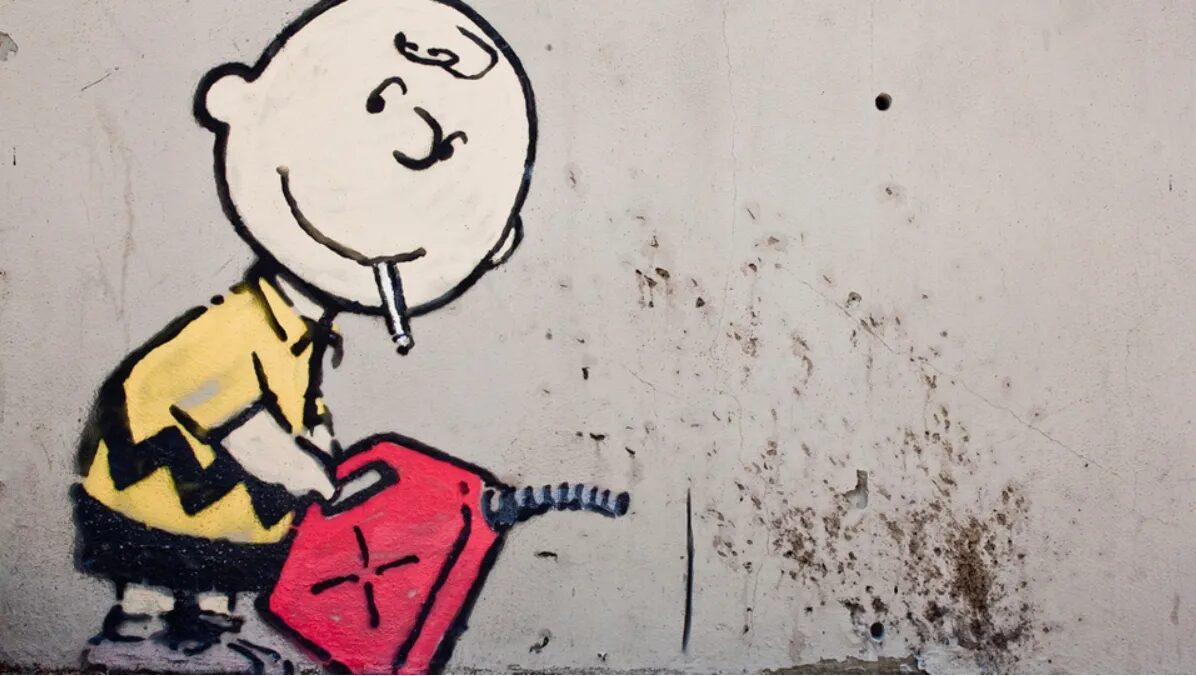
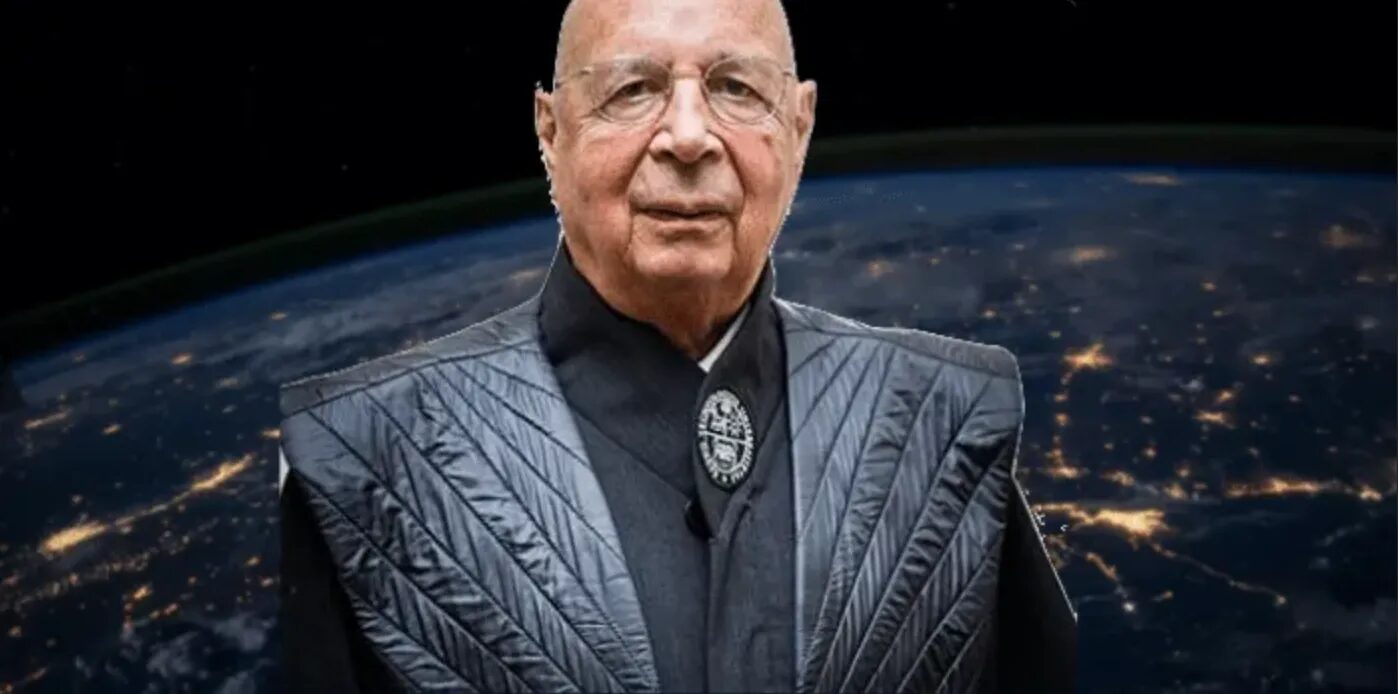
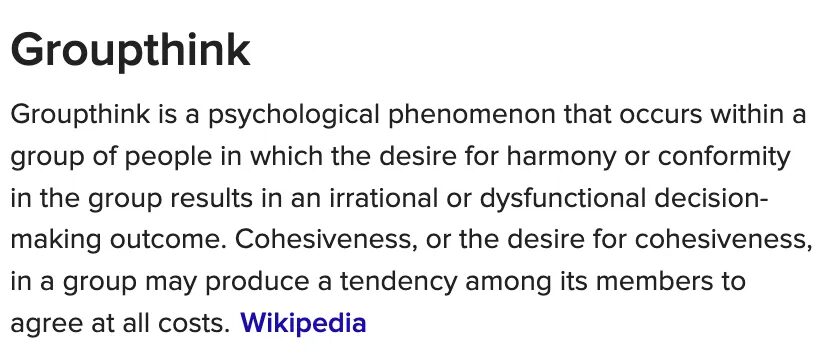
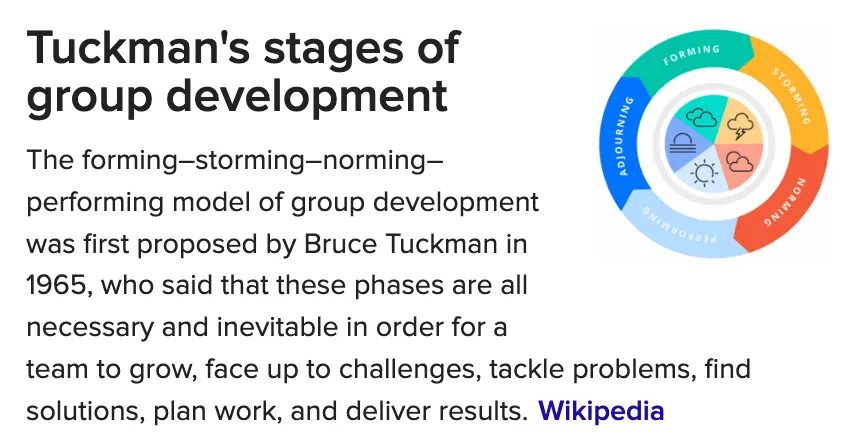
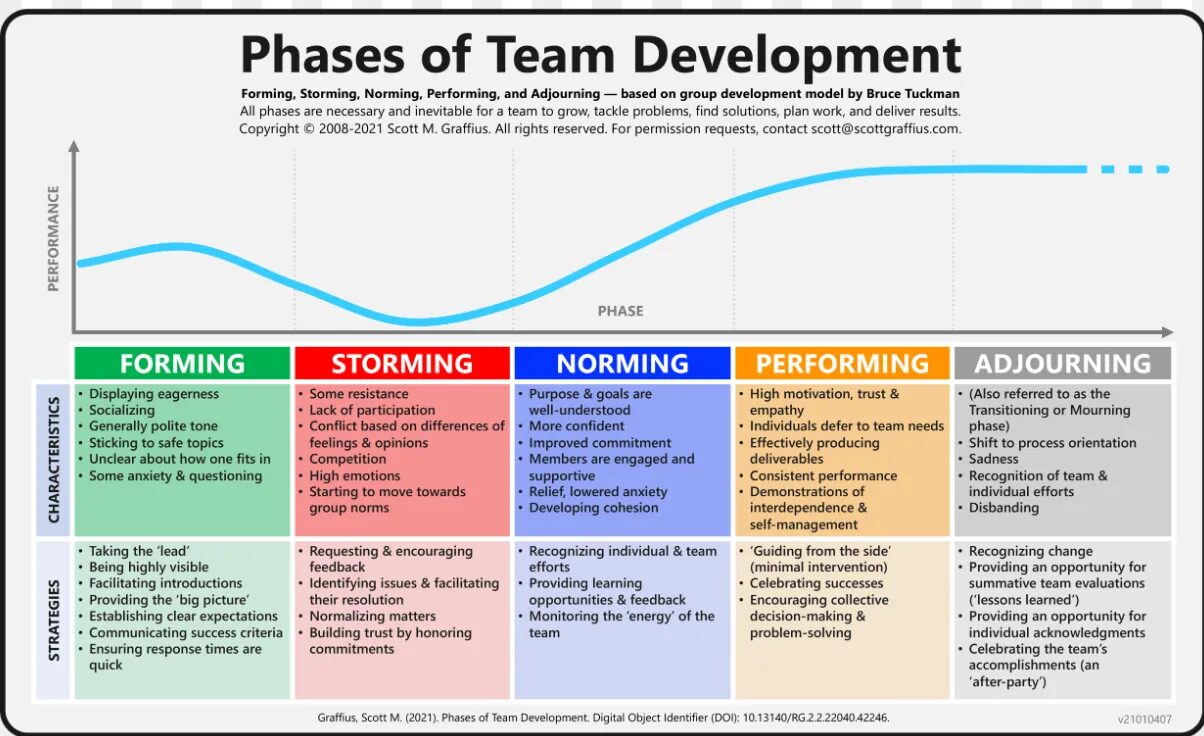
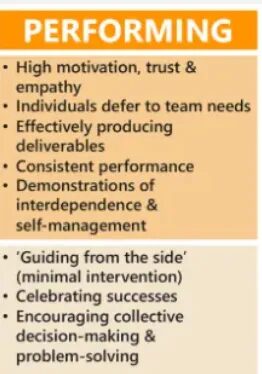



Reader Comments
When I began researching the ideas of social engineering and the manipulation of consciousness on a national scale, I came across the DARPA director Arati Prabhakar who did an interview in 2015 discussing the DARPA New Social Science 2 program and its focus on "collective identity". She said in the interview that "collective identity" was one of the most important areas of research for National Security. The program aims included how "collective identity" is formed, manipulated, how people join, commit, and engage in it. When we think of "collective identity", we think of the protest movements of the 60s, the Civil Rights movement, pro-abortion, pro-Life, Students for a Democratic Society. These are what research focused on in the late 20th century and early 21st century. Then the National Security focus becomes clear; "collective identity" must be controlled and manipulated, otherwise society as constructed can be threatened.
What is identity? Who are you? Are you your career, your religious beliefs, your accomplishments, your failings, your relationships, your family, your character, your choices, your business persona, your socio-economic position, your membership in an organization of any kind, your political beliefs, your intelligence, your compassion, your relationship to God? Is it purpose and meaning? Is it values and principles? The sense of identity is important for everyone; if you don't have it, then suicide becomes a choice.
In our current times, you can ask further questions. Where is identity being manipulated? What are the "collective identities" being created on the mockingbird media? Think of "gender confusion", "white supremacist domestic terrorist", "anti-vaxxer", "racist", "trans-gender", "fake news", "my body my choice", etc. All of these are "collective identities" that are being cast as either good or bad, but the focus is on "threat" to National Security.
In my view, if you don't have a sense of individual identity, then "collective identity" provides a "home" and sense of belonging. Then identity is connected to our emotional connections, which connects to our world view and belief systems. As Tali Shorat's research showed, people make choices based on belief, not evidence. The conclusion is that our beliefs that are connected to our "identity" make people manipulatable.